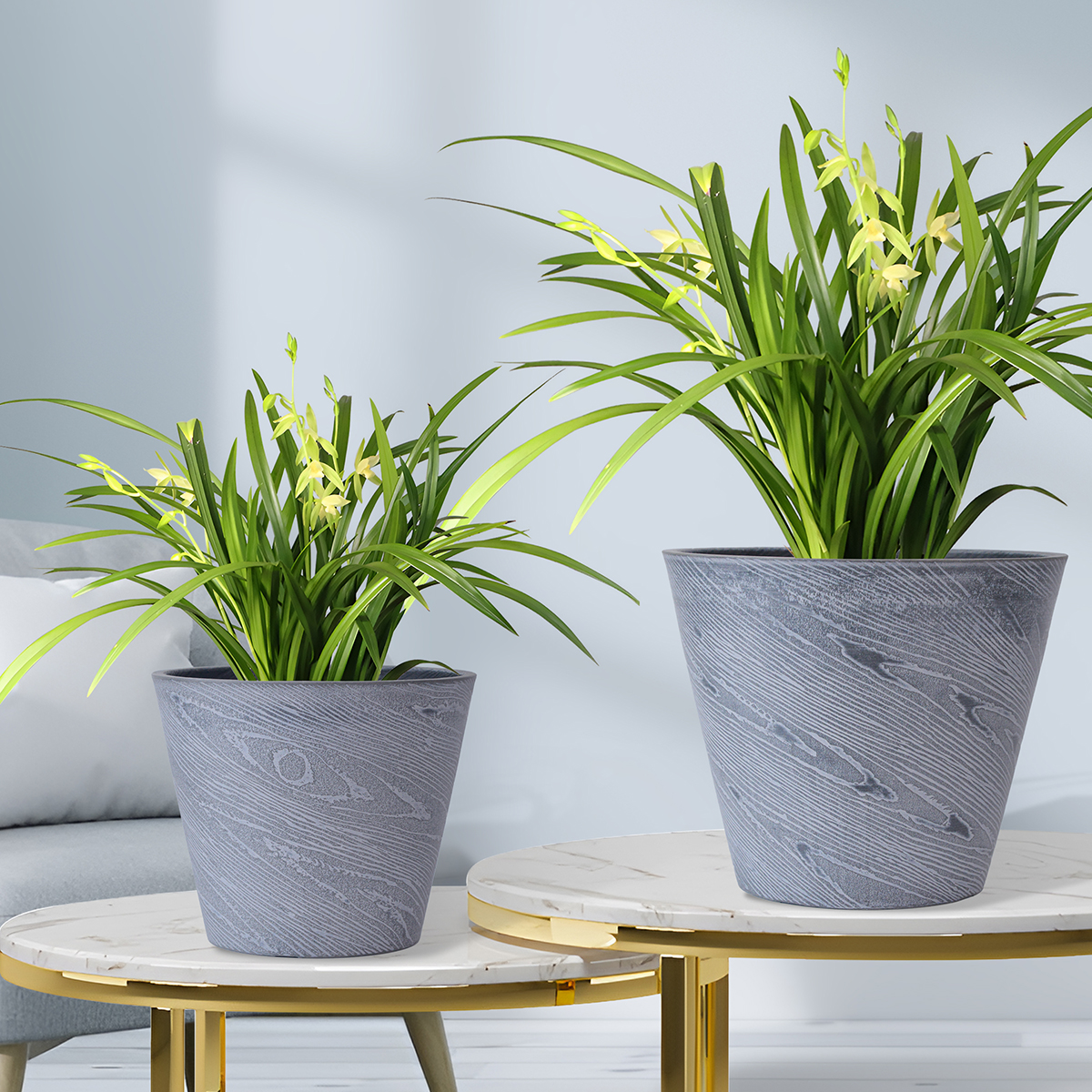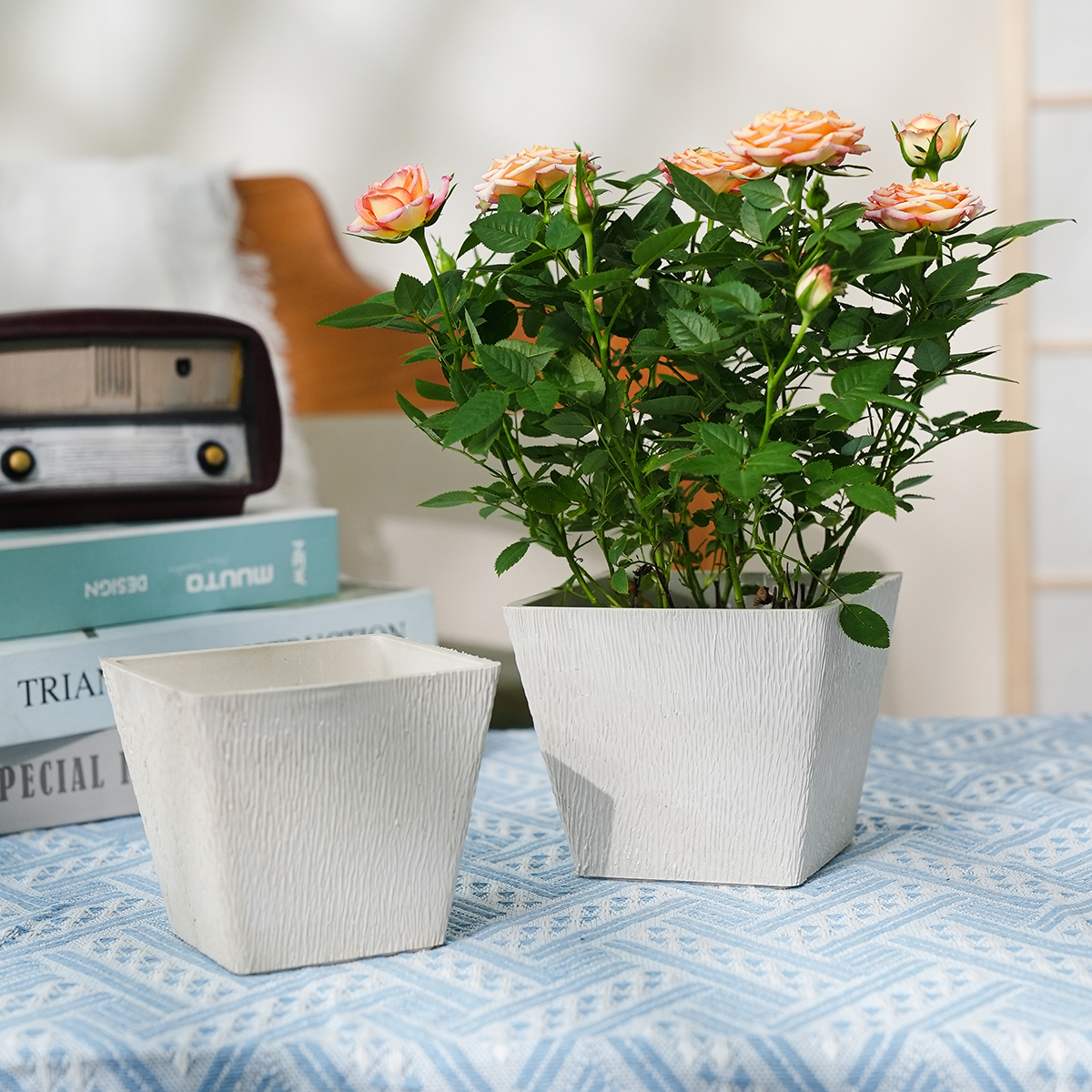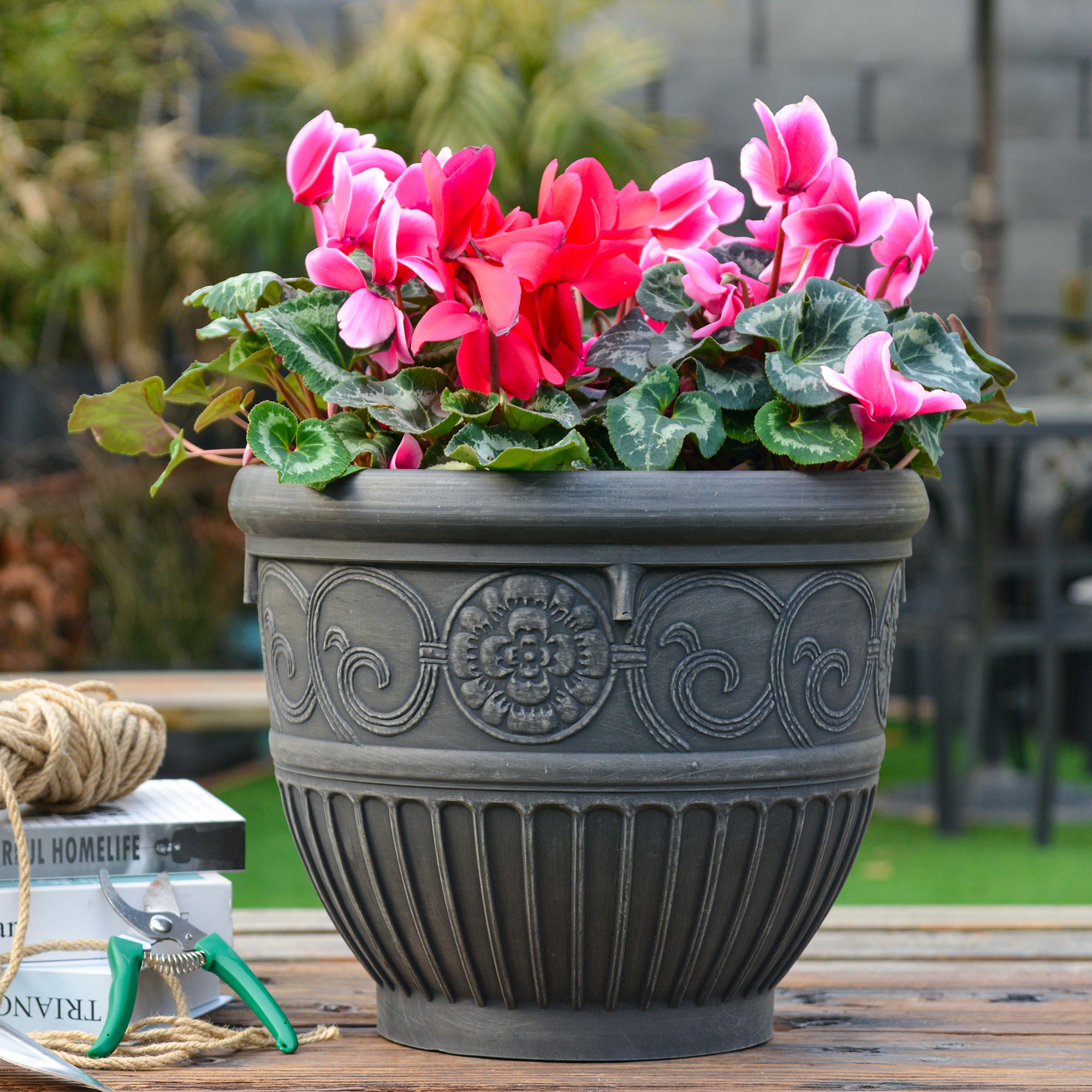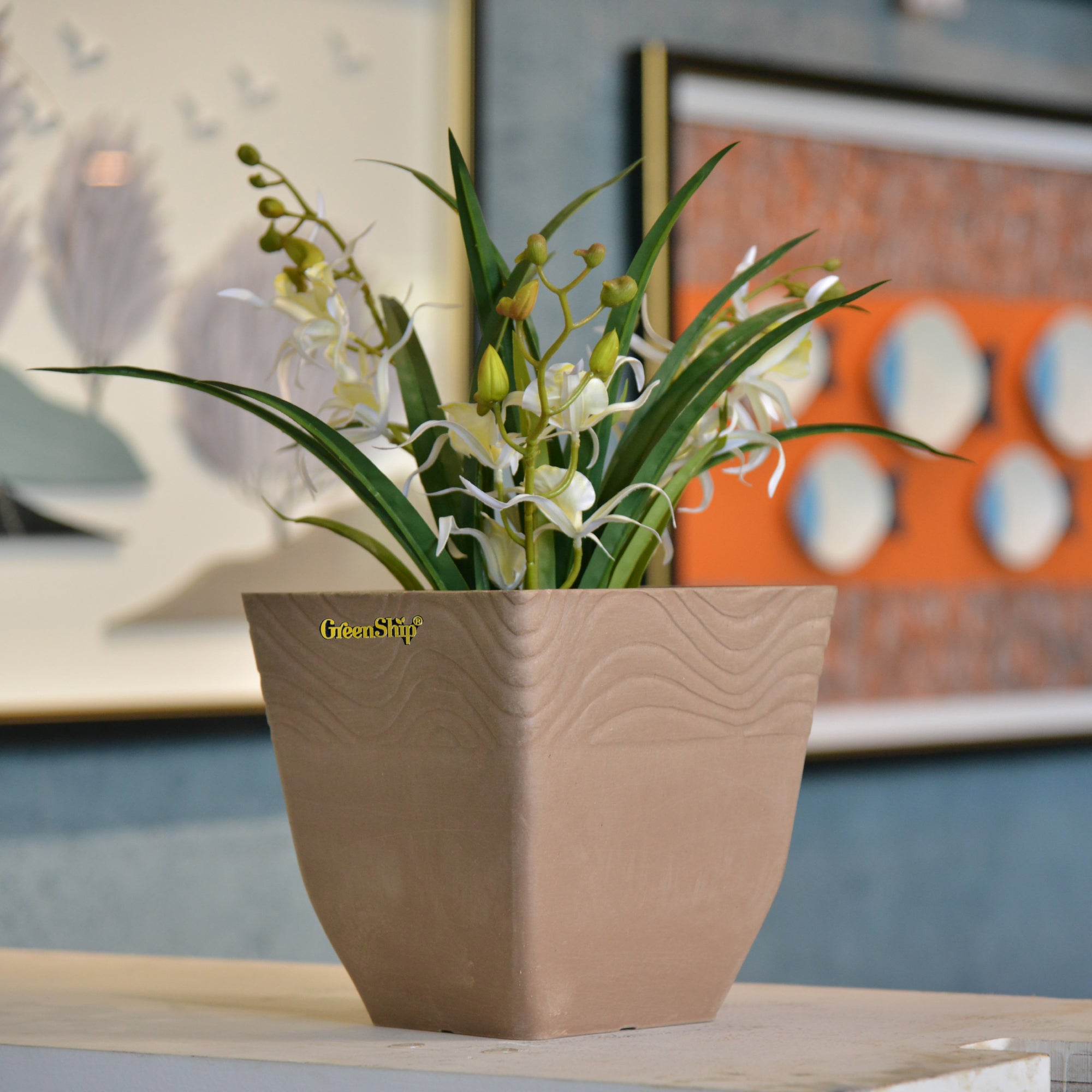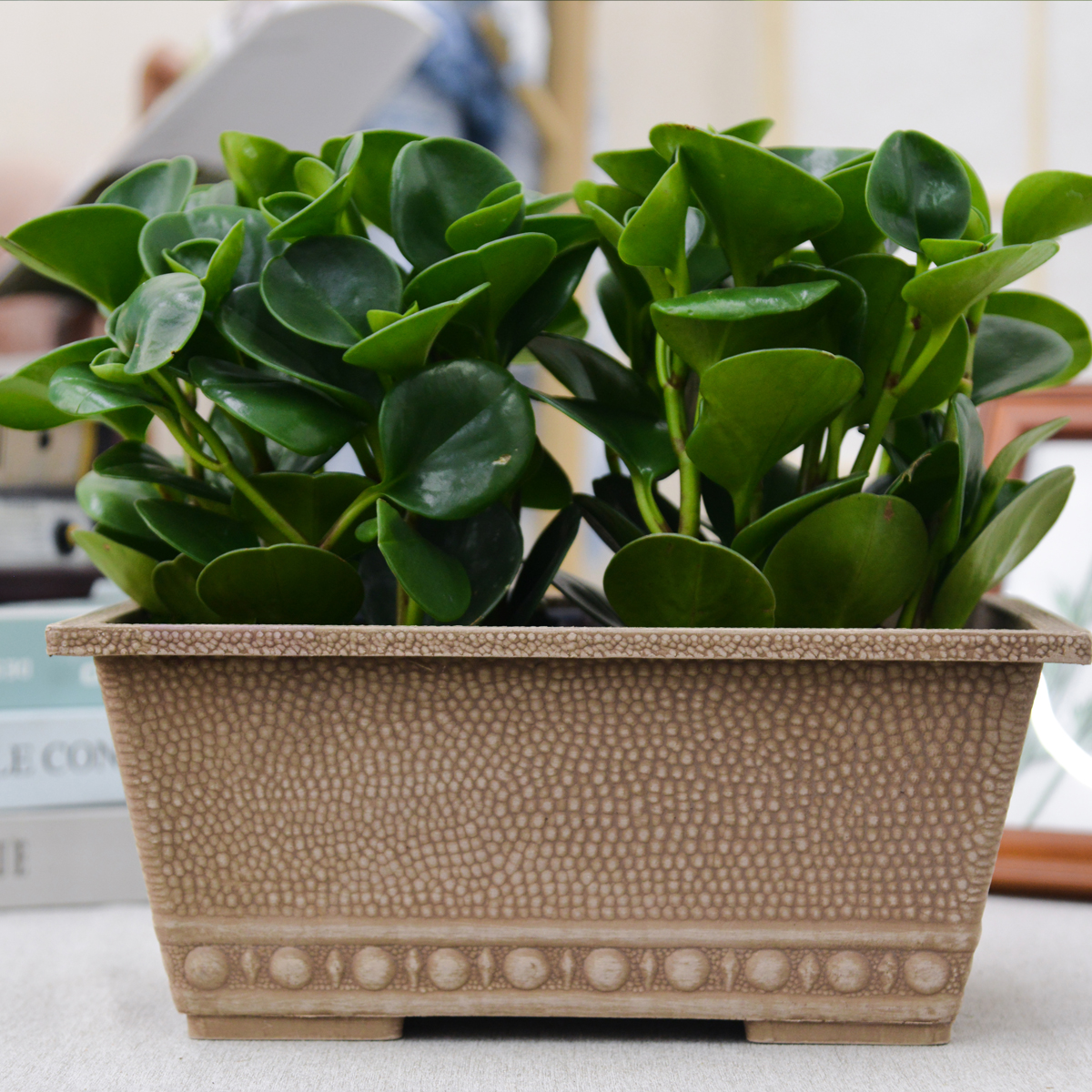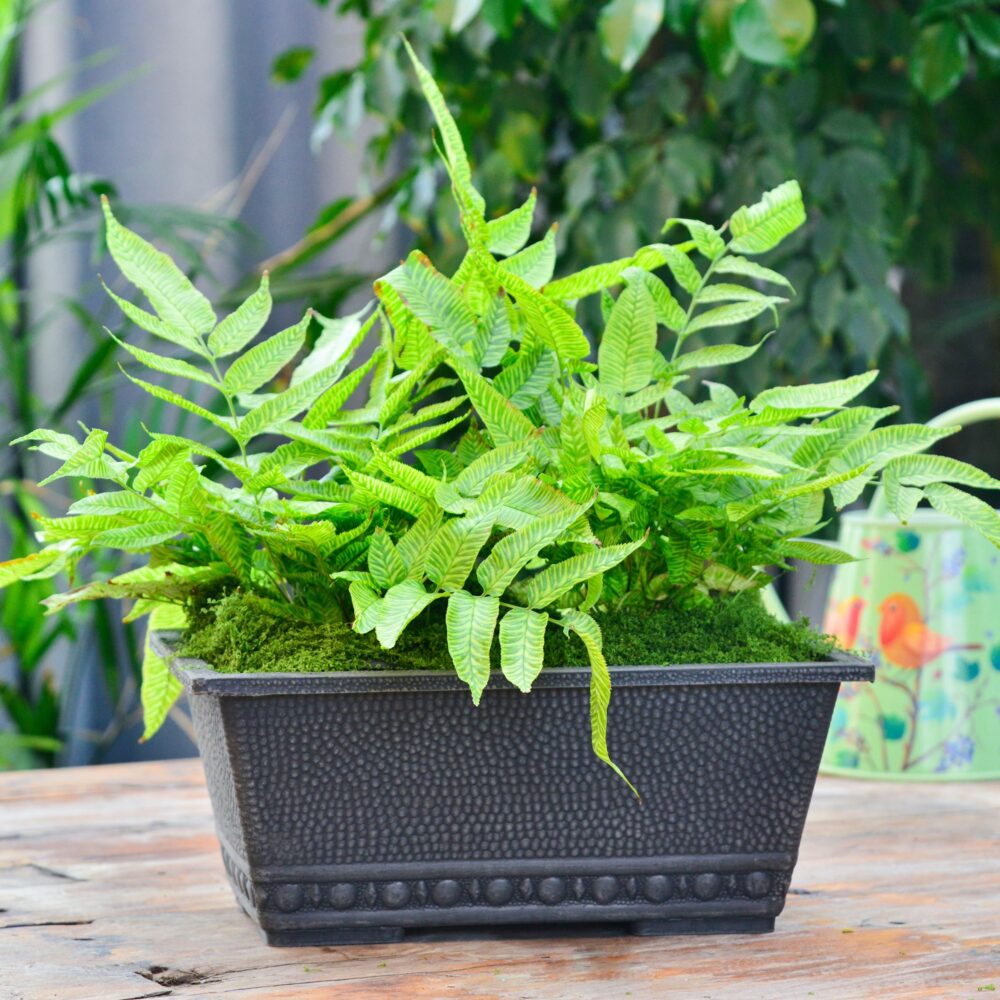How do I Choose a Planter with Drainage Holes?
Choosing a planter with drainage holes is essential for healthy plant growth. Here’s a guide to help you select the right one:
1. Why Drainage Holes are Important:
Drainage holes allow excess water to escape from the pot. Without them, water can accumulate, leading to:
- Root rot: Soggy soil deprives roots of oxygen, causing them to rot.
- Fungal diseases: Damp conditions encourage the growth of harmful fungi.
- Nutrient leaching: Overwatering can wash away essential nutrients from the soil.

2. What to Look For:
- Number of holes: The number and size of drainage holes depend on the size of the pot and the type of plant. Larger pots and plants that prefer drier conditions generally need more drainage. A good rule of thumb is at least one decent-sized hole for smaller pots, and several for larger ones.
- Hole size: The holes should be large enough to allow water to drain freely but not so large that soil washes out. You might consider using a coffee filter or small stones at the bottom of the pot to prevent soil loss while still allowing drainage.
- Placement of holes: Ideally, holes should be located at the bottom of the pot to ensure proper drainage. Some pots have raised bottoms or built-in saucers with drainage holes, which can be helpful.

3. Considering Pot Material:
- Terracotta: This material is naturally porous and allows for good drainage and aeration.
- Plastic: Plastic pots retain moisture longer than terracotta, so it’s especially important to have adequate drainage holes.
- Glazed ceramic: Glazed ceramic pots can vary in their drainage capabilities. Check carefully for drainage holes.
4. Matching Drainage to Plant Needs:
- Plants that like moist soil: These plants may not need as many drainage holes.
- Plants that prefer dry soil: These plants need excellent drainage to prevent root rot. Consider using a well-draining potting mix in addition to having drainage holes.
5. Using Saucers and Liners:
- Saucers: Use saucers to catch excess water and protect surfaces. Make sure the saucer isn’t sitting directly against the bottom of the pot, as this can impede drainage. You can add pebbles or pot feet to elevate the pot slightly.
- Liners: If you’re using a decorative pot without drainage holes, you can use a liner with drainage holes inside. This allows you to easily remove the liner to drain excess water.

In summary: When choosing a planter, prioritize those with sufficient drainage holes suited to your plant’s needs. Consider the material of the pot and use saucers or liners as needed to maintain healthy moisture levels.
HM
By greenship|2024-09-07T01:34:14+00:00September 7, 2024|Categories: Classic Sculpture Series|
20UF
By greenship|2024-09-07T01:27:44+00:00September 7, 2024|Categories: Classic Sculpture Series|
16 inch Round Rim Large Planter for Indoor Outdoor, Classic Reliefs Decorative Plant Pots with Drainage Hole
By greenship-seo|2025-04-10T07:37:41+00:00January 13, 2025|Categories: Classic Sculpture Series|Tags: Decorative Flower Pots|
8 inch Planter for Indoor Outdoor Plants, Set of 2 Modern Decorative Plant Pots with Drainage Hole, Decorative Flower Pots
By greenship-seo|2025-04-10T08:33:28+00:00January 7, 2025|Categories: Classic Sculpture Series|Tags: Decorative Flower Pots, Self-Watering Pots|
FEL34
By greenship|2024-09-07T02:23:01+00:00September 7, 2024|Categories: Classic Sculpture Series|
13 inch Classic Long Large Rectangular Window Box Planter for Indoor Outdoor Patio Balcony, Durable Window Planter with Drainage Hole
By greenship-seo|2025-04-10T08:04:34+00:00January 9, 2025|Categories: Classic Sculpture Series|Tags: Decorative Flower Pots, Self-Watering Pots|

